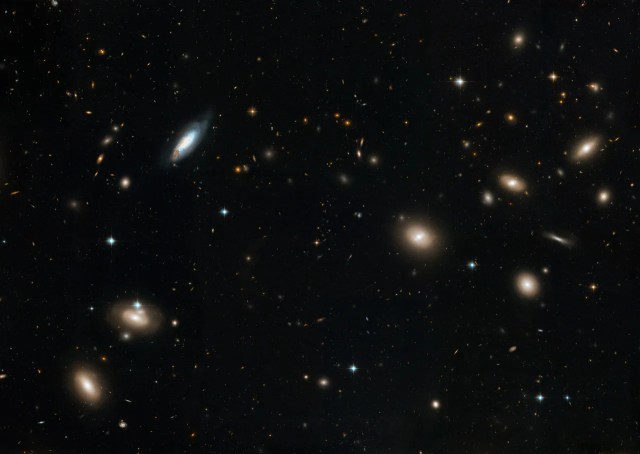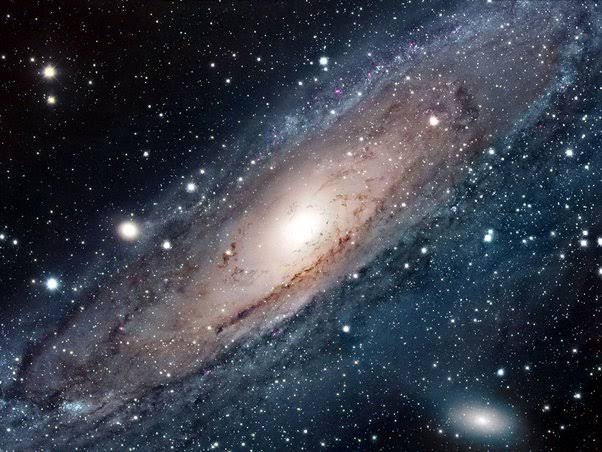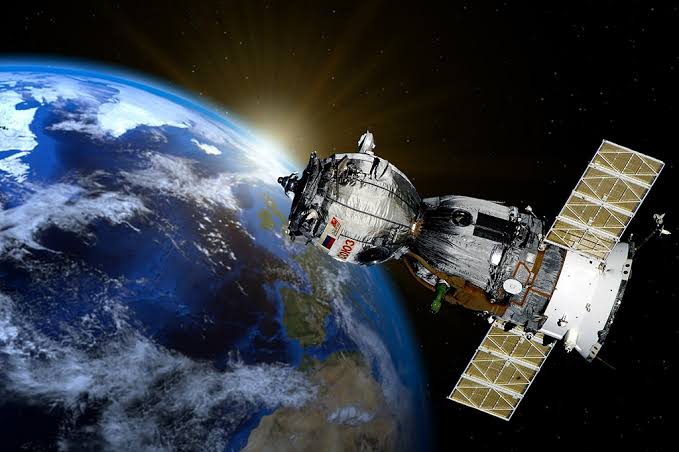Introduction
Space. The final frontier. It’s a vast, enigmatic expanse that has captivated humanity’s imagination for centuries. But how much do we really know about it? Despite decades of exploration and study, space remains filled with mysteries and wonders that continue to baffle scientists and stargazers alike. In this journey through the cosmos, we’ll dive into some of the lesser-known aspects of space, unraveling secrets that might just leave you starstruck.
The Vastness of Space: Beyond Human Comprehension

How Big Is Space?
Have you ever tried to wrap your mind around the size of space? It’s an almost impossible task. The observable universe stretches about 93 billion light-years in diameter, and that’s just what we can see. Imagine trying to traverse that distance—it’s like trying to count every grain of sand on every beach on Earth. Space’s sheer vastness is both humbling and awe-inspiring.

The Cosmic Web: Space’s Hidden Structure
While space might seem empty, it’s far from it. The universe is structured like a vast web, with galaxies, stars, and dark matter forming intricate, interconnected patterns. This cosmic web is a fundamental aspect of our universe, dictating the distribution of galaxies and the overall shape of the cosmos.
Dark Matter and Dark Energy: The Invisible Forces

What Is Dark Matter?
Dark matter is one of space’s greatest enigmas. It makes up about 27% of the universe, yet we can’t see it or directly detect it. We know it exists because of its gravitational effects on visible matter. Think of it as the scaffolding of the universe, holding galaxies together and influencing their rotation.
The Mystery of Dark Energy
If dark matter is the scaffolding, dark energy is the force pushing the universe apart. It accounts for roughly 68% of the universe and is responsible for its accelerated expansion. Dark energy is even more mysterious than dark matter—its nature and origin remain one of the biggest questions in cosmology.
Black Holes: Cosmic Vacuum Cleaners

What Are Black Holes?
Black holes are regions of space where gravity is so intense that nothing, not even light, can escape. They form when massive stars collapse under their own gravity. The idea of a black hole can be mind-bending—an object with infinite density, where the laws of physics as we know them break down.
The Event Horizon: Point of No Return
The event horizon is the boundary around a black hole beyond which nothing can return. It’s like the edge of a cosmic waterfall. Once you cross it, you’re inevitably pulled in. Recent images of black holes, such as the one captured by the Event Horizon Telescope, have given us our first real glimpse of these mysterious objects.
Neutron Stars: The Universe’s Dense Remnants

What Is a Neutron Star?
Neutron stars are the remnants of massive stars that have exploded in supernovae. They are incredibly dense—just a sugar-cube-sized amount of neutron-star material would weigh about a billion tons on Earth. These stars pack their mass into a sphere only about 20 kilometers across, making them some of the densest objects in the universe.
Pulsars: Nature’s Lighthouse
Some neutron stars emit beams of radiation from their magnetic poles. As they spin, these beams sweep across space, creating a pulsing effect. These pulsars act like cosmic lighthouses, and their regular pulses make them incredibly useful for studying the universe.
Exoplanets: Worlds Beyond Our Solar System

The Search for Exoplanets
For centuries, we wondered if planets existed beyond our solar system. Thanks to missions like Kepler and TESS, we now know they do. Thousands of exoplanets have been discovered, ranging from hot Jupiters to potentially habitable Earth-like worlds. The search for exoplanets is one of the most exciting fields in astronomy today.
The Possibility of Life
Could there be life on these distant worlds? It’s a tantalizing question. While we haven’t found definitive proof yet, the discovery of Earth-like exoplanets in the habitable zone—the region around a star where conditions might be right for life—keeps the possibility alive. Who knows what we might find as our technology and techniques improve?
The Milky Way: Our Galactic Home

Structure of the Milky Way
Our galaxy, the Milky Way, is a barred spiral galaxy composed of billions of stars, planets, and other celestial objects. It has a distinct structure with a central bulge, spiral arms, and a halo of globular clusters. Understanding our galaxy’s structure helps us learn more about how galaxies form and evolve.
Our Place in the Galaxy
We reside in the Orion Arm, a minor spiral arm of the Milky Way. Our solar system orbits the galactic center at a speed of about 220 kilometers per second. Yet, it still takes us approximately 230 million years to complete one orbit around the Milky Way’s center.
Space Phenomena: Wonders of the Cosmos

Nebulae: Cosmic Nurseries
Nebulae are vast clouds of gas and dust where stars are born. The Orion Nebula is one of the most famous examples. These stellar nurseries are not only beautiful but also crucial to the cycle of star formation, recycling materials from dead stars to create new ones.
Supernovae: Stellar Explosions
When a massive star exhausts its nuclear fuel, it can explode in a supernova. These cataclysmic events are among the most powerful in the universe, outshining entire galaxies for a short time. Supernovae distribute elements across space, seeding the cosmos with the building blocks of life.
Space Exploration: Humanity’s Quest

The Apollo Missions
The Apollo missions, particularly Apollo 11, marked humanity’s first steps on another world. These missions demonstrated our ability to explore beyond Earth and paved the way for future space exploration. Neil Armstrong’s famous words, “That’s one small step for man, one giant leap for humanity,” still resonate today.
The International Space Station
The International Space Station (ISS) is a symbol of international cooperation in space. Orbiting Earth, it serves as a laboratory for scientific research and a testbed for technologies needed for future deep-space missions. Astronauts from around the world live and work together on the ISS, advancing our understanding of living in space.
The Future of Space Exploration
Mars Missions
Mars is the next big target for human exploration. Missions like NASA’s Perseverance rover are paving the way, studying the planet’s geology and searching for signs of past life. Plans for crewed missions to Mars are in the works, with the goal of establishing a human presence on the Red Planet within the next few decades.
Beyond Mars: The Outer Planets
The outer planets and their moons hold many mysteries. Missions like Cassini to Saturn and Juno to Jupiter have provided incredible insights, but there’s still much to learn. Future missions aim to explore these distant worlds, potentially uncovering new knowledge about our solar system’s formation and the potential for life.
Space Technology: Innovations Driving Exploration

A Space Telescope
Space telescopes like Hubble and the upcoming James Webb Space Telescope have revolutionized our understanding of the universe. By observing space from above Earth’s atmosphere, these instruments provide clear, detailed images of distant galaxies, nebulae, and other celestial phenomena.
Robotics in Space
Robotic missions play a crucial role in space exploration. Rovers, landers, and orbiters have explored planets, moons, and even comets. These robotic explorers gather data, conduct experiments, and prepare the way for human missions, making space exploration safer and more efficient.
The Impact of Space Exploration on Earth
Technological Advancements
Many technologies we use daily originated from space research. GPS, satellite communication, and even memory foam are byproducts of space exploration. These innovations improve our lives and demonstrate the practical benefits of investing in space science.
Inspiration and Education
Space exploration inspires people around the world. It ignites curiosity, encourages STEM education, and fosters a sense of unity as we explore the cosmos together. The achievements of space missions serve as a testament to human ingenuity and the power of collaboration.
Space Mysteries Yet to Be Solved
The Fermi Paradox
The Fermi Paradox asks why we haven’t found evidence of extraterrestrial civilizations despite the high probability of their existence. Various theories attempt to explain this, from the idea that intelligent life is rare to the possibility that advanced civilizations are avoiding us.
The Nature of Dark Matter and Dark Energy
While we know dark matter and dark energy exist, their exact nature remains elusive. Unlocking these mysteries could revolutionize our understanding of the universe, potentially leading to new physics and transformative discoveries.
Conclusion
Space is a vast, mysterious frontier that continues to captivate and challenge us. From the enigmatic dark matter and dark energy to the potential for life on distant exoplanets, there’s so much we don’t yet know. But with each new mission, observation, and discovery, we inch closer to understanding the cosmos. As we continue to explore, we’re not just learning about space—we’re learning about ourselves and our place in the universe.
More Posts
Profiting from Your Guinness World Record
What to Do if Your Phone is Stolen
FAQs
Dark matter is an invisible substance that makes up about 27% of the universe. We can’t see it, but we know it exists due to its gravitational effects on visible matter.
The event horizon is the boundary around a black hole beyond which nothing can escape. It marks the point of no return. Once an object crosses this boundary, it is inevitably pulled into the black hole.
Black holes form when massive stars collapse under their own gravity, creating regions where the gravitational pull is so strong that not even light can escape.
Yes, there are thousands of exoplanets, or planets outside our solar system, that have been discovered. These range from massive gas giants to rocky Earth-like worlds, some of which lie within the habitable zone where conditions might be right for life.
While there are significant challenges, scientists and engineers are working on making human habitation on Mars a reality. Issues like radiation, low temperatures, and the need for sustainable life support systems must be addressed before humans can live on Mars long-term. However, missions are being planned to explore the feasibility of colonizing the Red Planet.